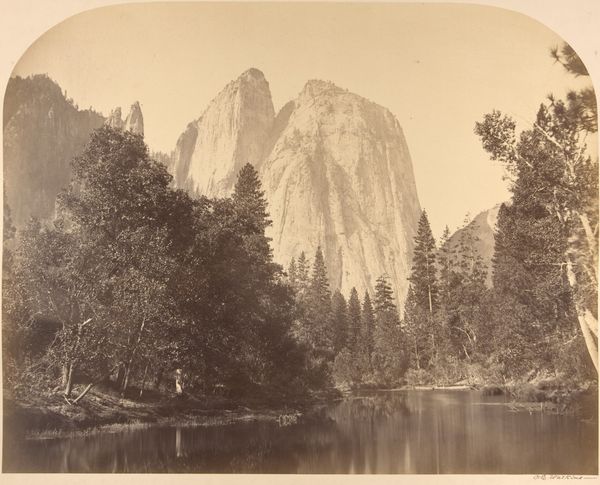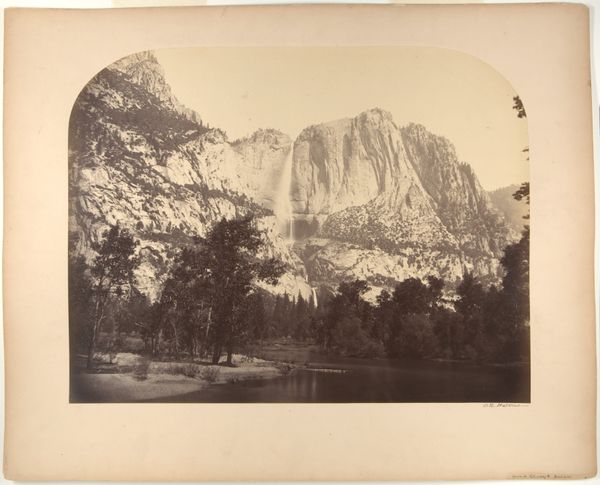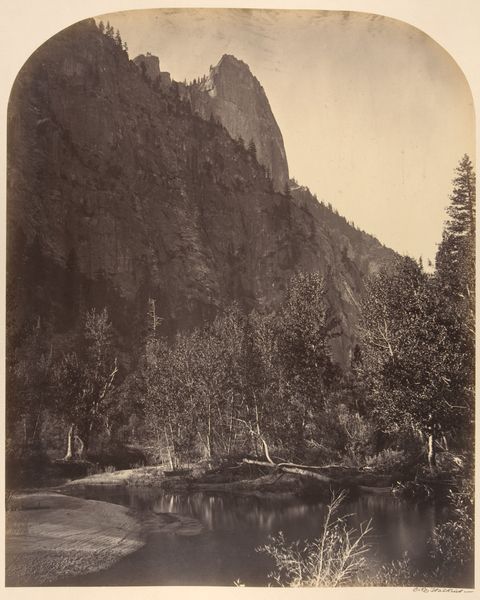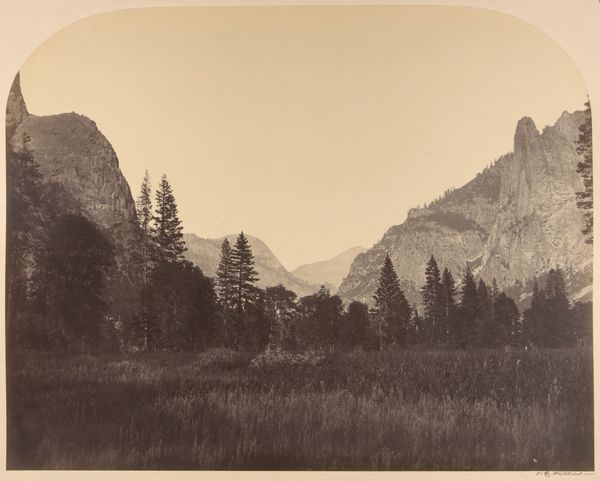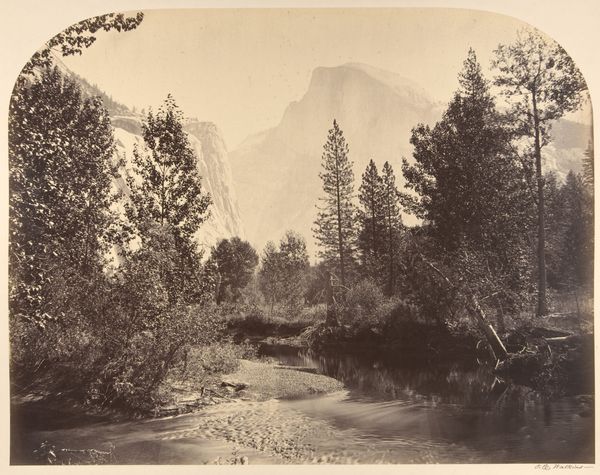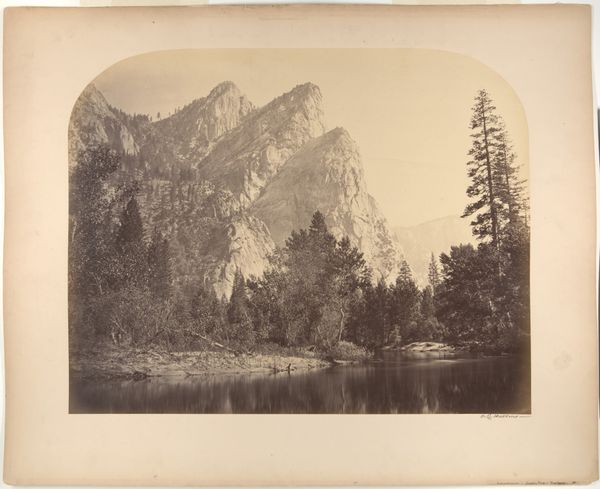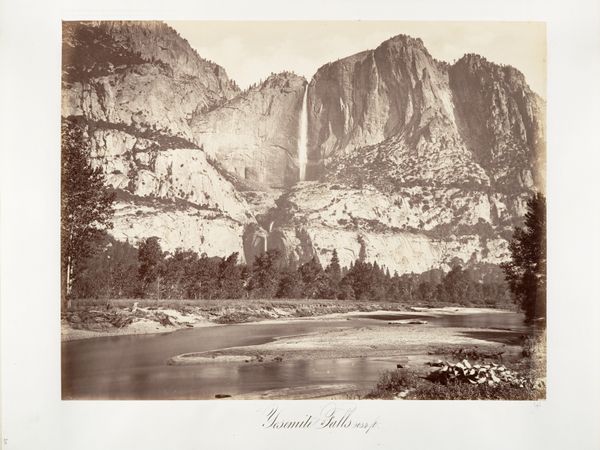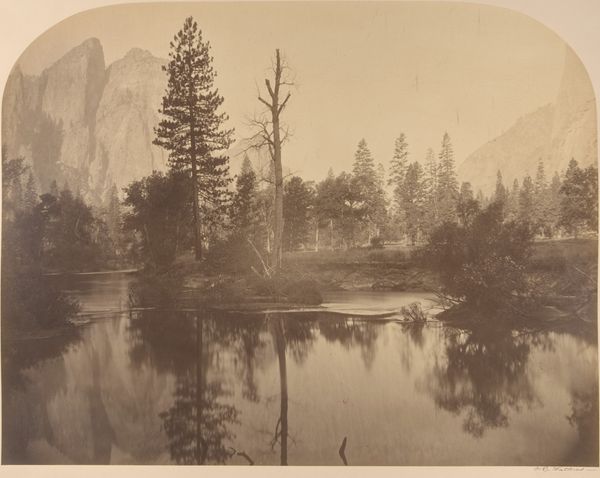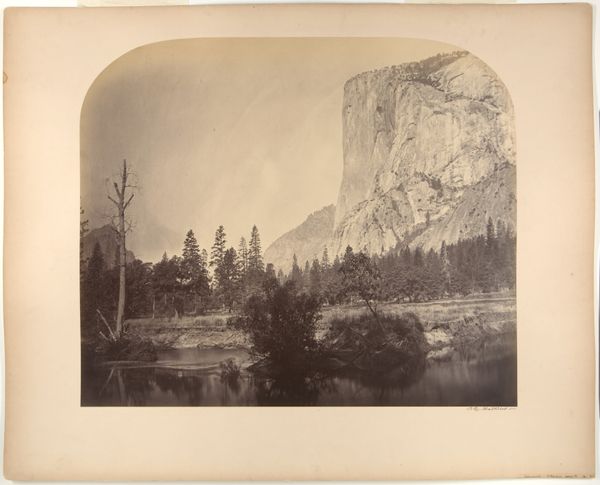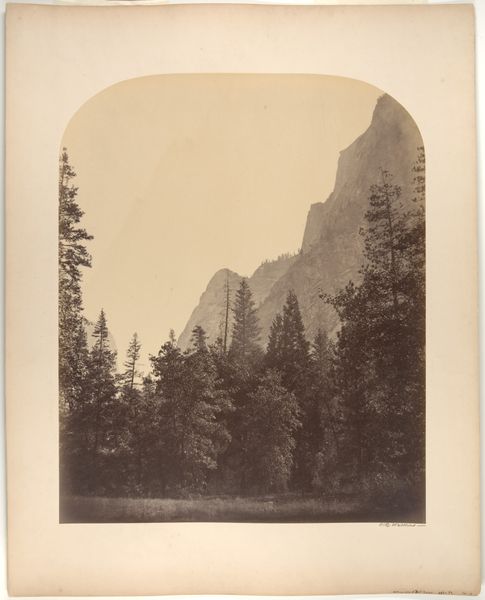
River View, Down the Valley, Cathedral Rock on Left 1861
0:00
0:00
photography, gelatin-silver-print
#
landscape
#
river
#
photography
#
mountain
#
gelatin-silver-print
#
hudson-river-school
#
realism
Dimensions: Image: 15 9/16 × 20 9/16 in. (39.5 × 52.2 cm) Mount: 21 1/16 × 26 1/2 in. (53.5 × 67.3 cm)
Copyright: Public Domain
Editor: So, here we have Carleton Watkins’ “River View, Down the Valley, Cathedral Rock on Left,” taken in 1861 using the gelatin-silver process. It has a very calm, almost ethereal quality. What are your thoughts when you look at it? Curator: I immediately consider the industrial implications of producing photographs like this one. Watkins was not just an artist; he was operating within a burgeoning technological landscape. Think of the mines providing the silver for the gelatin-silver prints, the railroads enabling access to sites like Yosemite. It wasn't simply a picturesque scene; it was part of a rapidly changing economic and material reality. Editor: That’s a fascinating way to look at it. I hadn't really considered the economic aspect so deeply. Does the location itself – Yosemite – play into that material analysis for you? Curator: Absolutely! Yosemite was becoming a site of resource extraction, of tourism, even a symbol in the debates over land use and preservation. Watkins’ photographs were not neutral; they shaped perception, promoted development, and influenced policy. The photographs themselves became commodities, influencing land value and promoting expansion. How were indigenous communities impacted, do you think? Editor: I suppose the visual emphasis on untouched wilderness obscures the reality of displacement and resource exploitation suffered by Native populations. It’s unsettling to think about that serene landscape having such a complex, and even exploitative, history. Curator: Precisely! Looking at Watkins through a material lens allows us to unpack those tensions, highlighting the complex relationship between art, industry, and society during that era. It definitely shifts the calm feeling I had at first glance! Editor: I definitely agree. Thanks for highlighting that. It has completely changed the way I understand this piece and photography from this era.
Comments
No comments
Be the first to comment and join the conversation on the ultimate creative platform.
